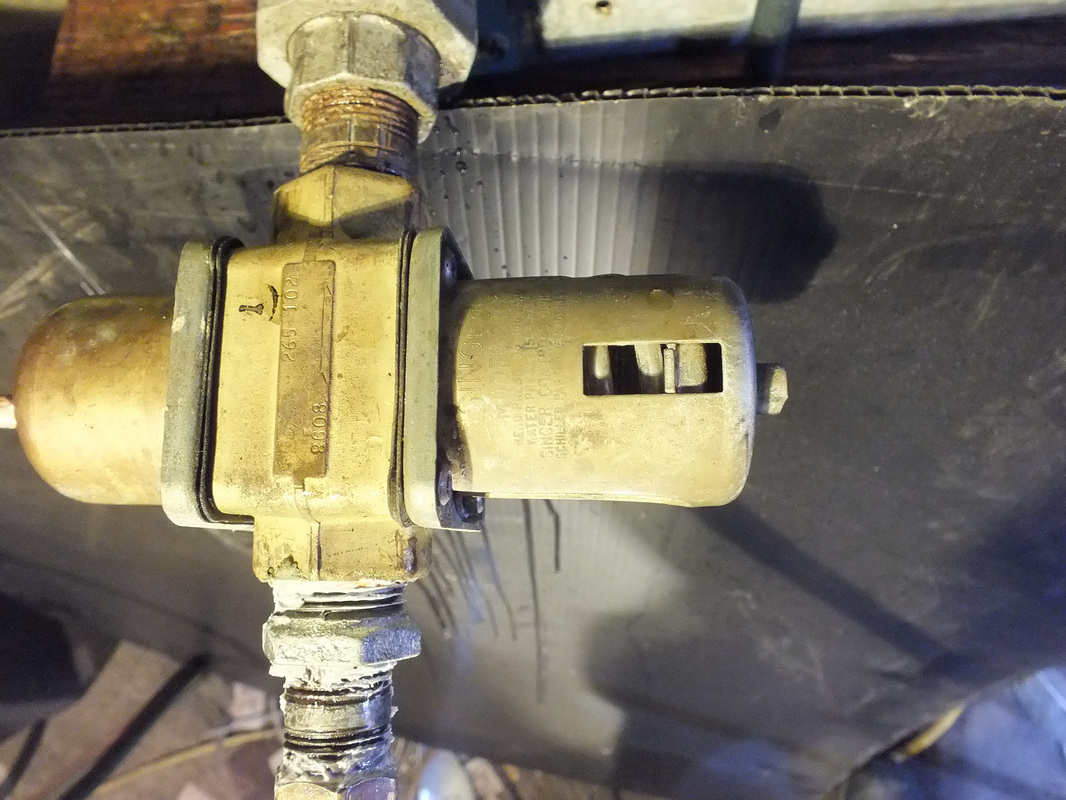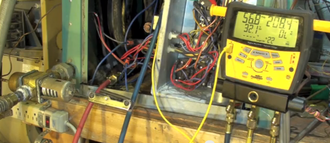Water source heat pump
How the water source heat pump works
The water source heat pump uses water as a heat source in heat mode and to dissipate heat in cooling mode.
These units are used when a plentiful source of water is available or you are using piping buried in the ground to absorb heat from the ground. They are not practical or usually legal with city water.
The indoor coil is the same as with an air source pump. What would be the outdoor coil is a water to refrigerant heat exchanger similar to a water cooled condenser. Newer heat exchangers are somewhat more complex to provide higher heat transfer. The unit we are looking at below is an early form of this heat pump.
Why use water
Water has the highest capability of all substances to absorb sensible heat. It absorbs 1 BTU per pound to change the temperature of the water 1 degreeF. So a small amount of water can carry a considerable amount of heat.
The first generally used source of water used for heat is well water.
If I used water at 55F and absorbed heat from it to lower its temperature to 40F, I would get 15 BTUs per pound of water.
Figuring 8.33 pounds per gallon, would be 125 BTUs per gallon.
If the water volume reaches 5 GPM, times the number of BTUs would equal 37,500 BTUs per hour. So these units can move high amounts of Heat.
There is no defrost to reduce efficiency but if you are pumping water from a well there is some loss of efficiency from the pump.
The video below shows the parts that make up the water source heat pump.
These units are used when a plentiful source of water is available or you are using piping buried in the ground to absorb heat from the ground. They are not practical or usually legal with city water.
The indoor coil is the same as with an air source pump. What would be the outdoor coil is a water to refrigerant heat exchanger similar to a water cooled condenser. Newer heat exchangers are somewhat more complex to provide higher heat transfer. The unit we are looking at below is an early form of this heat pump.
Why use water
Water has the highest capability of all substances to absorb sensible heat. It absorbs 1 BTU per pound to change the temperature of the water 1 degreeF. So a small amount of water can carry a considerable amount of heat.
The first generally used source of water used for heat is well water.
If I used water at 55F and absorbed heat from it to lower its temperature to 40F, I would get 15 BTUs per pound of water.
Figuring 8.33 pounds per gallon, would be 125 BTUs per gallon.
If the water volume reaches 5 GPM, times the number of BTUs would equal 37,500 BTUs per hour. So these units can move high amounts of Heat.
There is no defrost to reduce efficiency but if you are pumping water from a well there is some loss of efficiency from the pump.
The video below shows the parts that make up the water source heat pump.
Below we are adjusting the water control valve that limits the amount of water that is available to the heat exchanger and are noting the changes in pressures and temperatures of the refrigerant.
Below is a look at the volume of water used by the water source heat pump and what difference different amounts of water make when adjusting to the water valve.
The video below below covers charging the water source heat pump.
More coming


